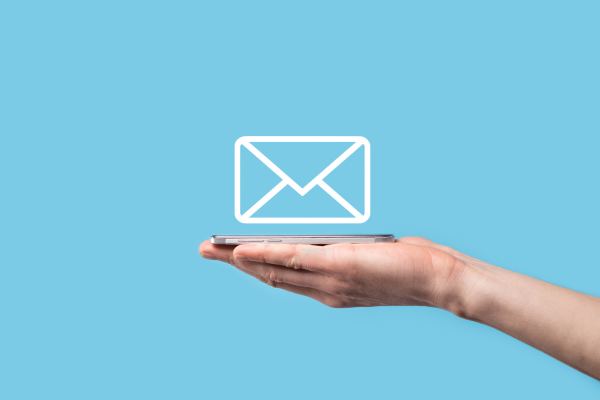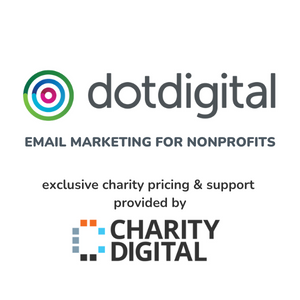Insights
INSIGHTS
All Topics
My Account
How to write strong email subject lines
When you’ve spent time crafting an email, you want it to be read. Sharpening your subject line is the key
Whether you’re emailing your monthly newsletter, a fundraising thank you, or asking someone to sign a petition, if your subject line isn’t working, no-one will read it.
According to OptinMonster, 47% of email recipients will open an email based on the subject line alone. Your subject line has to work hard – whether it’s for supporters, volunteers, service users, or even internal colleagues.
Here are some ideas to help get your email read.
Write the email subject line last
It can be easier to write the subject line once you know exactly what’s going in the email. And by the time you’ve written your email, you’ll probably have crafted some strong phrases along the way.
Ask a question in the email subject line
Asking a direct question is a good way to get people’s attention. Take this example from Positive News, launching The Positive News Podcast:
‘Heard the good news?’
Or this from Action for Children:
‘Can you make a difference this summer?’
As well as speaking directly to the recipient, the question mark itself can help, as it visually stands out from the letters and draws attention.
Keep email subject lines clear and concise
Around 55% of emails are viewed on mobile and subject lines often get shortened when viewed in this way. So it’s best to keep subject lines concise. According to Mailchimp, the ideal is no more than nine words or 60 characters.
Include numbers in your email subject line
Including numbers in your subject line – especially if you use figures instead of words – can help the line to stand out.
For example, this from CharityJob:
‘5 steps to becoming an eco-friendly charity’
Or from Platypus Digital:
‘5 ways your charity can use ChatGPT’
These examples also tell the reader that there’s helpful information inside if they click through.
Say what’s inside the email
While your newsletter may be packed full of interesting articles, unless the subject line works hard, it’s not likely to get read. So a simple: ‘Here is your June newsletter’ does its job in terms of telling the reader what’s inside the email. But it can work much harder.
Pulling out a few key draws – especially the lure of some useful advice – can inspire your reader to find out more.
For example, from Rosterfly:
‘Rosterfly Newsletter: Rosterfly Celebrates 3 Million Users: Building a Successful Corporate Volunteer Program’
Or MS-UK:
‘Heat intolerance and MS, fundraising fun, latest news and more!’
Create a sense of time sensitivity
Creating a sense of time sensitivity is a good way to make someone open your email. You could include the words ‘now’, ‘urgent’, or ‘today’. This can be especially effective for fundraising campaigns or asking for petition signatures.
Get recipients interested
Another approach is to pique the reader’s curiosity. Take this from Greenpeace:
‘We’ve got some BIG news’
(The key here is to make sure you do have big news – which Greenpeace did – or else your reader will feel cheated.)
Or this example from Nesta, which makes the reader feel special by putting them ahead of the crowd:
‘Our clean heat policy plan: be the first to hear’
Use the recipient’s name
Personalising your email subject lines can help your message to stand out in a busy inbox. In fact, adding the recipient’s first name to the subject line can increase open rates by 9.1%.
Here’s an example from Dogs Trust:
‘Tara, will you help free dogs from domestic abuse?’
Or this from The Enthuse Team:
‘Theo, here is your Christmas Giving Insights report’
Don’t overdo the emojis in your subject line
Emojis can be helpful in attracting attention, but use them with care. According to Mailchimp, never use more than one emoji per subject line, and only use them to supplement words rather than to replace them (this helps to keep your message clear).
Hints for internal messages
If you’re writing an internal message and want it to get to the top of the pile, be blatant about what’s inside. That’s especially important if it’s urgent request. For example:
‘Urgent - please approve this proof by 5pm’
Your colleague doesn’t even have to open the message to know what you need them to do.
Test out your subject lines
As with any comms, what works for another charity, might not work for yours. Testing out your subject lines can help define what works best for you. That could either be running a bunch of suggestions past some colleagues, or for bigger campaigns, carrying out some A/B testing (also known as split-testing) to see which subject line performs best.
Read our article to find out more about A/B testing.
Keep your eyes peeled
Notice what emails you open and ask yourself why. Then start compiling a list of effective subject lines, or pop them in a separate folder. Next time you’re stuck for ideas, you can dip in for inspiration.
More on this topic
Recommended Products
Related Videos
Our Events
Charity Digital Academy
Our courses aim, in just three hours, to enhance soft skills and hard skills, boost your knowledge of finance and artificial intelligence, and supercharge your digital capabilities. Check out some of the incredible options by clicking here.



















